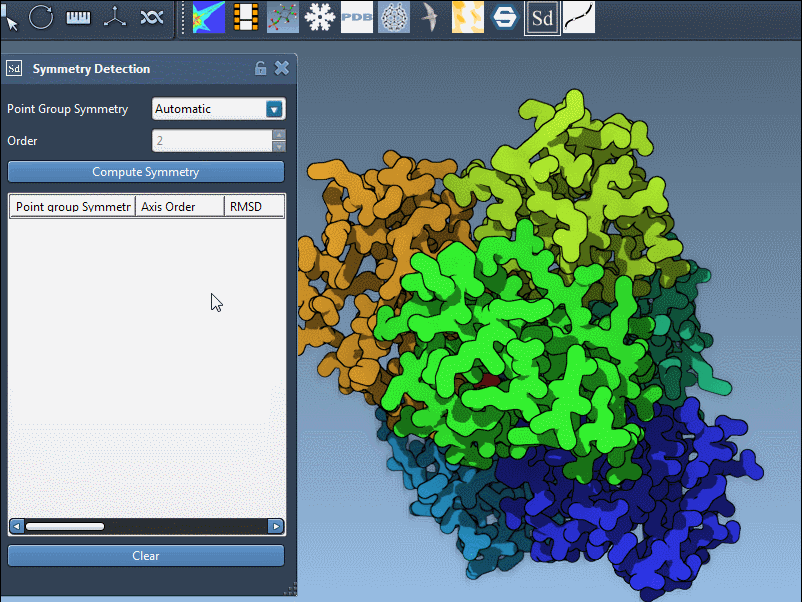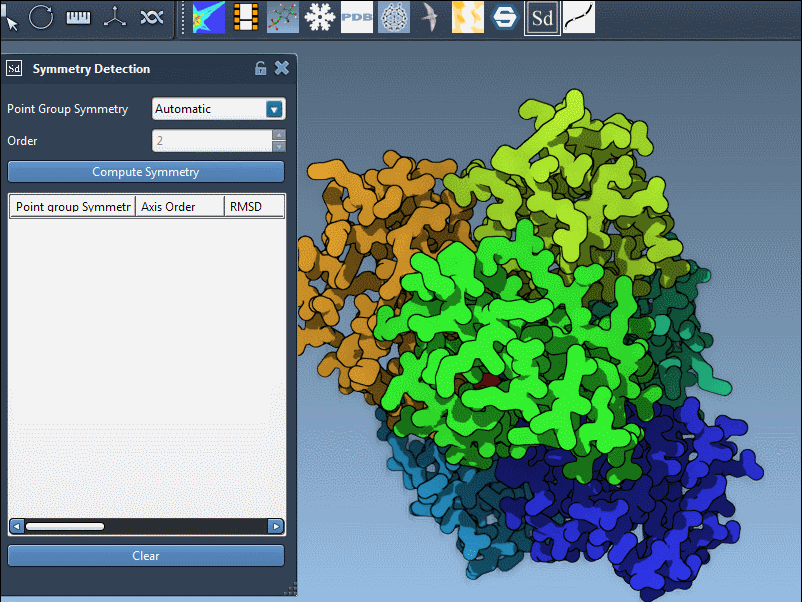When working with large molecular assemblies like protein complexes or viral capsids, symmetry can act as a powerful ally. Recognizing repeating patterns through symmetry detection can simplify analyses, reduce computational demands, and enhance interpretation of experimental data.
But what happens when a structure appears to have more than one plausible symmetry group?
Why Multiple Symmetries Can Appear
Molecular structures, especially large ones, often contain nested or approximate symmetries. The Symmetry Detection extension in SAMSON helps identify such symmetries automatically. However, due to the complexity of some assemblies, it may return multiple symmetry groups.
This is not a bug—it’s a feature. But it also leads to questions such as: “Which symmetry group should I use for simulation?” or “Which axis best reflects the true structure?”
How to Choose the Best Group
SAMSON provides criteria to guide your choice when several symmetry groups are proposed:
- Prefer higher-order groups that still maintain accuracy.
- Check the RMSD value, a measure of how well the detected symmetry aligns repeats.
For example, if SAMSON offers both D2 and D3 for a structure like 1B4B, and D3 comes with a low RMSD, then D3 is likely a better approximation of the symmetric organization.
Selecting and Visualizing
Once you’ve chosen a symmetry group, SAMSON allows you to:
- Highlight the primary axis by clicking the group.
- Explore multiple axes within the same group, each with its own RMSD.
- Double-click an axis to align the camera down that symmetry direction for inspection or illustration.

This kind of orientation can be especially useful for generating figures or setting up simulations focused along a particular axis of symmetry.
Manual Group Selection
If you happen to know the expected symmetry group—for example, if it’s well-established in literature—you can directly specify it through SAMSON’s interface. This can be helpful if the automatic detection proposes a slightly different group due to structural variation or noise.
Navigate through the dropdown options in the symmetry detection panel to select the order and category (such as D3 or C4), and SAMSON will apply it to your structure.

Tips for Working Efficiently
- Use symmetry to extract and work only on the unique asymmetric unit.
- Combine symmetry visualization with ribbons or surface models for better context.
- Capture aligned views via the viewport for clear documentation or publication images.
Conclusion
Interpreting multiple detected symmetries is less about finding the perfect group and more about identifying the most informative and accurate one for your goal. By understanding how to explore and compare symmetry groups within SAMSON, you unlock opportunities to streamline simulations and deepen structural insights.
To learn more about SAMSON’s symmetry detection capabilities, visit the official documentation.
SAMSON and all SAMSON Extensions are free for non-commercial use. You can get SAMSON here.





